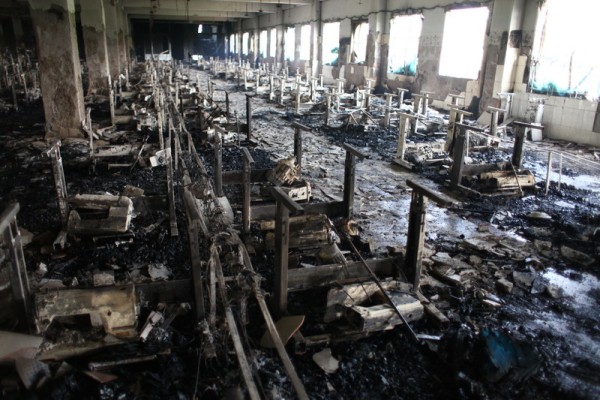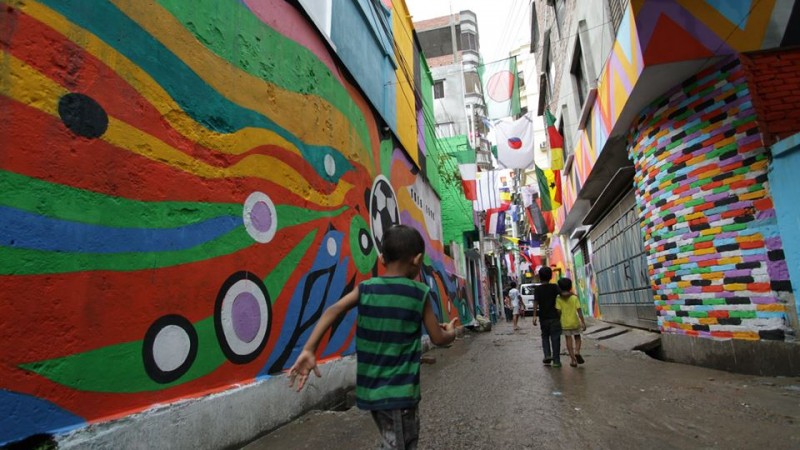Bangladesh has more 4,000 ready-made clothes factories of different sizes, which are earning more than three-quarters of the countries export revenue. The world’s third-largest garments export industry employs more than 3 million workers, 90% of whom are women.
Over two decades these garments factories contributed to changing the role of poor Bangladeshi women who mostly used to work as housemaids. Although the cost of labor is low Vikas Bajaj wrote in the New York Times what positive impact this industry had on the families and off-springs of the female workers and how it empowered them.
As a developing country Bangladesh is under close scrutiny by nongovernmental organizations (NGOs) and Corporate Social Responsibility Stakeholders regarding compliance. In the past five years both CSR experts and buyers report improved labor and social compliance standards. But there are still some areas of compliance that needs further improvement. The government has been stringent on eradicating child labor and increased fire safety measures but some entrepreneurs are more keen on profit rather than improving working conditions.
The recent tragic fire at Tazreen Fashions Ltd's nine story factory building in Nischintapur, Ashulia (near the Capital Dhaka) that killed more than 110 garments workers, has raised many questions. Although the factory had a total of 335 fire extinguishing equipment and 300 trained employees to fight fire in emergency situations, there was no visible efforts to douse the flames. The fire alarm went off at right time but witnesses claimed that a number of doors were locked by the management preventing the workers from escaping.
As the images of burnt bodies emerged in the social media and in TV broadcasts many people were shocked and outraged. Thousands of angry garments workers protested today (Monday) demanding justice and better working conditions. Many netizens vented their rage in Facebook, blog and other social media asking many questions.
more>>>>>;
Over two decades these garments factories contributed to changing the role of poor Bangladeshi women who mostly used to work as housemaids. Although the cost of labor is low Vikas Bajaj wrote in the New York Times what positive impact this industry had on the families and off-springs of the female workers and how it empowered them.
As a developing country Bangladesh is under close scrutiny by nongovernmental organizations (NGOs) and Corporate Social Responsibility Stakeholders regarding compliance. In the past five years both CSR experts and buyers report improved labor and social compliance standards. But there are still some areas of compliance that needs further improvement. The government has been stringent on eradicating child labor and increased fire safety measures but some entrepreneurs are more keen on profit rather than improving working conditions.
 |
| The factory destroyed by fire killing more than 100 workers. Image by Ibrahim. Copyright Demotix (25/11/2012) |
The recent tragic fire at Tazreen Fashions Ltd's nine story factory building in Nischintapur, Ashulia (near the Capital Dhaka) that killed more than 110 garments workers, has raised many questions. Although the factory had a total of 335 fire extinguishing equipment and 300 trained employees to fight fire in emergency situations, there was no visible efforts to douse the flames. The fire alarm went off at right time but witnesses claimed that a number of doors were locked by the management preventing the workers from escaping.
As the images of burnt bodies emerged in the social media and in TV broadcasts many people were shocked and outraged. Thousands of angry garments workers protested today (Monday) demanding justice and better working conditions. Many netizens vented their rage in Facebook, blog and other social media asking many questions.
more>>>>>;






















![DSC03838 [640x480]](http://globalvoicesonline.org/wp-content/uploads/2012/11/DSC03838-640x480.jpg)






